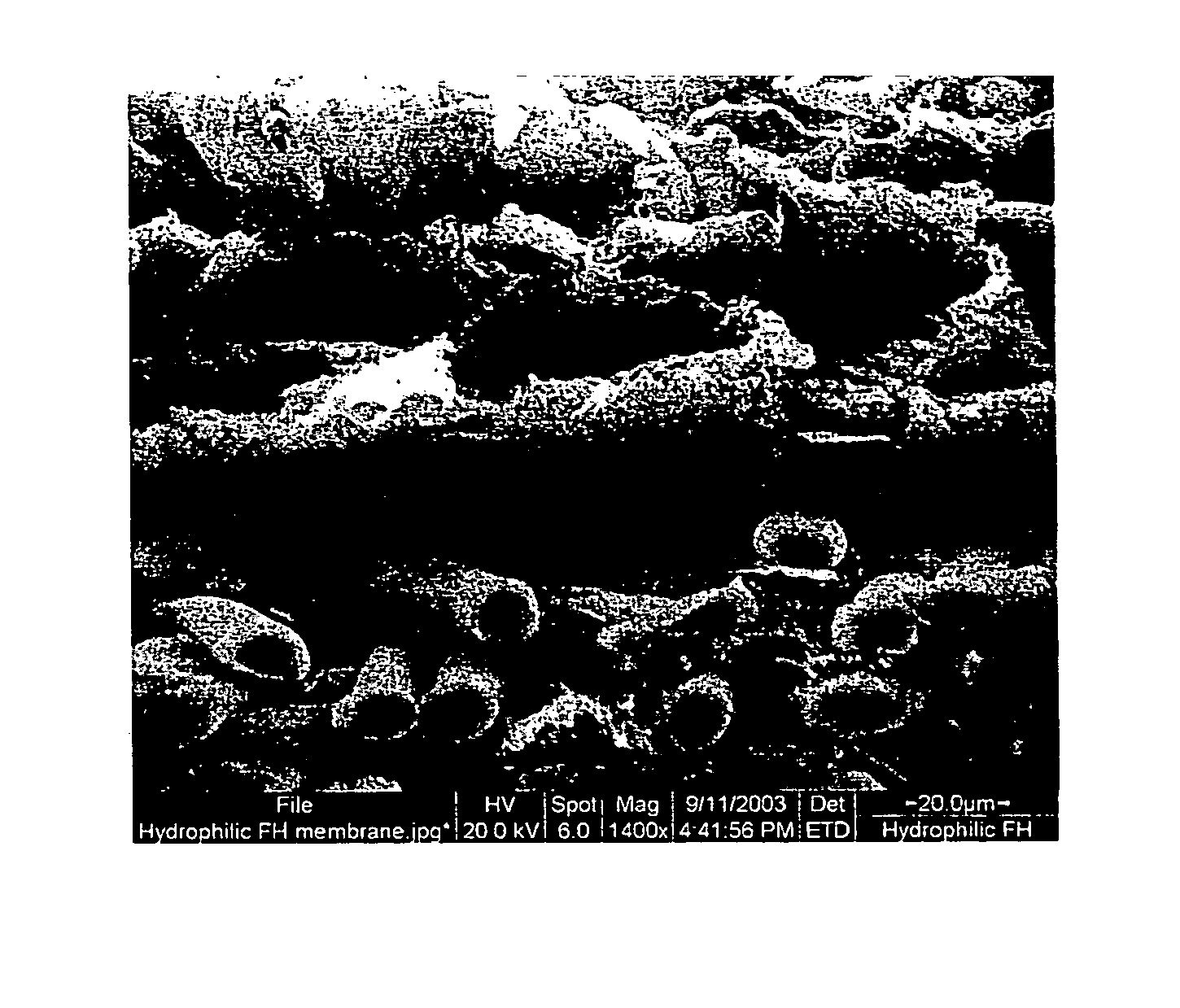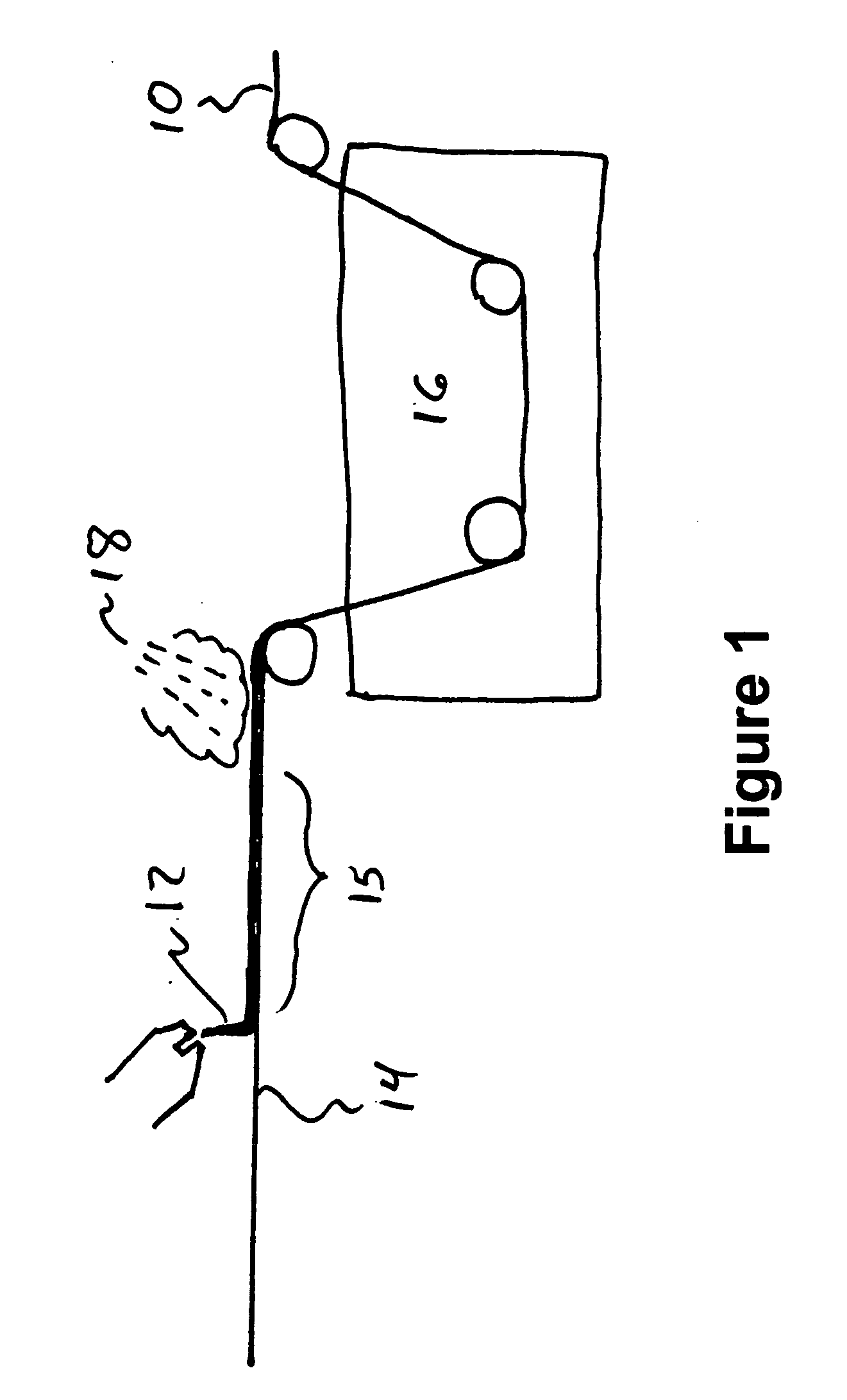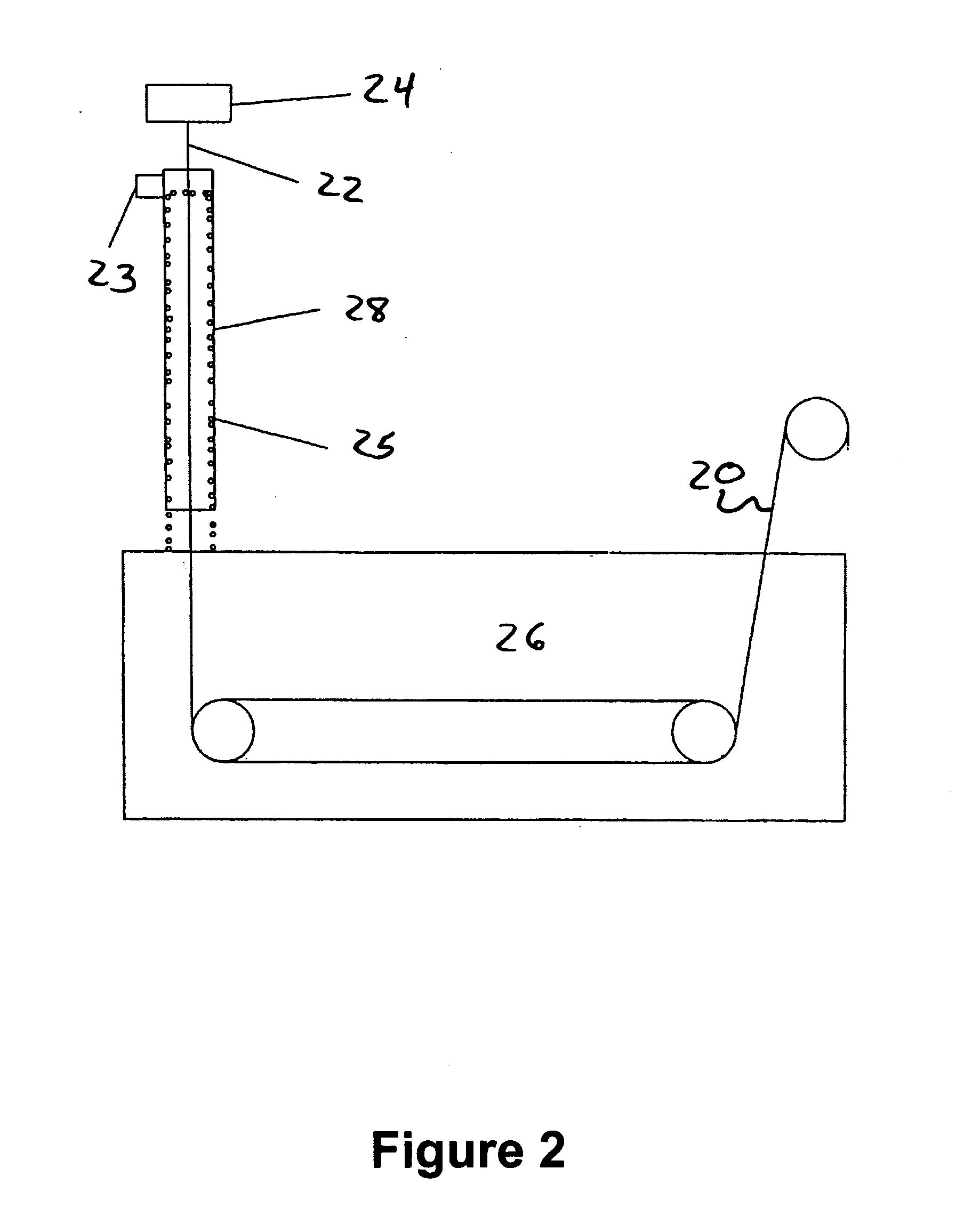Semipermeable hydrophilic membrane
a hydrophilic membrane and membrane technology, applied in the field of semi-permeable hydrophilic membranes, can solve the problems of fouling of the membrane, difficult to be wet with aqueous liquid, and longer service life of the cross-flow filter membran
- Summary
- Abstract
- Description
- Claims
- Application Information
AI Technical Summary
Benefits of technology
Problems solved by technology
Method used
Image
Examples
example 1
PVDF / HPC Membrane (about 106 Dalton Cutoff)
[0054] N-methyl pyrollidone (NMP) was added to a mixer configured as a single-shaft disperser. The amount of solvent was about 189.6 pounds (lb, 86.0 kilograms (kg)). Poly(vinylidene fluoride) (PVDF, about 33.6 lb, 15.2 kg) and hydroxypropyl cellulose (HPC, about 4.8 lb, 2.2 kg) were then added to the solvent gradually. The PVDF was HYLAR 461 from SOLVAY SOLEXIS. The HPC was KLUCEL-Type L, having a molecular weight of about 95,000 daltons, from HERCULES, INC. The mixer was a MODEL 775A mixer from MYERS ENGINEERING, INC. (Bell, Calif.). This mixture was then mixed at a speed of about 1070 revolutions per minute (rpm) and heated over a period of about 4.5 hours until the temperature of the mixture reached about 156-160° F. (69-71° C.). After mixing and heating for about 2 hours, about 12.0 lb (5.4 kg) of lithium chloride (LiCl) was added. The final composition of the casting mixture was about 79.0 percent by weight (wt %) NMP, about 14.0 wt ...
example 2
PVDF / HPC Membrane (about 500,000 Dalton Cutoff)
[0056] NMP (about 186 lb, 84.4 kg) was added to a MODEL 775A mixer, and to this solvent was added PVDF (about 37.2 lb, 16.9 kg) and HPC (about 4.8 lb, 2.2. kg). This mixture was then mixed at a speed of about 1050 rpm and heated over a period of about 2.75 hours until the temperature of the mixture reached about 156-160° F. (69-71° C.). After mixing and heating for about 2 hours, about 12.0 lb (5.4 kg) of LiCl was added. The PVDF, HPC, and the mixer were as described for Example 1. The final composition of the casting mixture was about 77.5 wt % NMP, about 15.5 wt % PVDF, about 2.0 wt % HPC, and about 5.0 wt % LiCl.
[0057] The casting mixture was then allowed to cool to about 119° F. (48° C.). The mixture was spread onto a porous polyester substrate, as used in Example 1, moving at a speed of about 10 fpm (3.0 m / min), having a width of about 42 inches (107 cm) and a casting knife height above the belt of about 0.012 inches (0.305 mm). ...
example 3
PVDF / HPC Membrane (about 100,000 Dalton Cutoff)
[0058] NMP (about 191 lb, 86.6 kg) was added to a MODEL 775A mixer, and to this solvent was added LiCl (about 12.8 lb, 5.8). This mixture was then mixed at a speed of about 1100 rpm and heated over a period of about 3.5 hours until the temperature of the mixture reached about 173-178° F. (78-81° C.). After mixing and heating for about 30 minutes, PVDF (about 41.2 lb, 18.7 kg) and HPC (5.0 lb, 2.3 kg) were added. The PVDF, HPC, and the mixer were as described for Example 1. The final composition of the casting mixture was about 76.4 wt % NMP, about 16.5 wt % PVDF, about 2.0 wt % HPC, and about 5.1 wt % LiCl.
[0059] The casting mixture was then allowed to cool to about 105° F. (41° C.). The mixture was spread onto a porous polyester substrate, as used in Example 1, moving at a speed of about 10 fpm (3.0 m / min), having a width of about 42 inches (107 cm) and a casting knife height above the belt of about 0.012 inches (0.305 mm). After tra...
PUM
| Property | Measurement | Unit |
|---|---|---|
| molecular weight | aaaaa | aaaaa |
| molecular weight | aaaaa | aaaaa |
| molecular weight | aaaaa | aaaaa |
Abstract
Description
Claims
Application Information
 Login to View More
Login to View More - R&D
- Intellectual Property
- Life Sciences
- Materials
- Tech Scout
- Unparalleled Data Quality
- Higher Quality Content
- 60% Fewer Hallucinations
Browse by: Latest US Patents, China's latest patents, Technical Efficacy Thesaurus, Application Domain, Technology Topic, Popular Technical Reports.
© 2025 PatSnap. All rights reserved.Legal|Privacy policy|Modern Slavery Act Transparency Statement|Sitemap|About US| Contact US: help@patsnap.com



